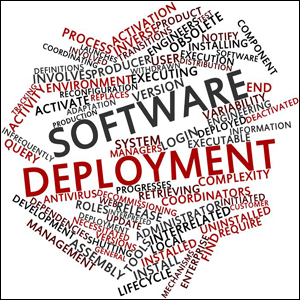 Having led over 180 implementations of our software for Communication Service Providers, Utilities, Campuses, Managed Service Providers, and Enterprises, we have discovered some common best practices for large-scale software deployments. Using these guidelines will increase the software’s value and ease the anxiety of tackling a large project.
Having led over 180 implementations of our software for Communication Service Providers, Utilities, Campuses, Managed Service Providers, and Enterprises, we have discovered some common best practices for large-scale software deployments. Using these guidelines will increase the software’s value and ease the anxiety of tackling a large project.
Let’s start with the most important best practice – communication. Communication is a nebulous term in the context of software implementation, so you need to start with a communication plan. As the implementation project progresses, everyone involved needs to know what is going on, what has already happened and what will happen next. No surprise is a good surprise. Stakeholder departments need to know well in advance what is required of them, which data sets to grant access to, projected downtimes during testing, etc. Executives need to know start dates, end dates, and receive incremental progress reports. A good communication plan answers three questions: who, how and when. Adhering to this process ensures discipline and consistency, increasing the chance for success.
Another practice we suggest? Manage the project with the end result and dates in mind. Every large project should have an end result and tentative end date in mind. Whether your timeline is conservative or aggressive, plans are usually set with imperfect information and priorities that are likely to change. More information is discovered as the project progresses, and priorities shift. Demands might arise that change aspects of the project; it is vital to stay in front of these changes and make sure all stakeholders are moving toward the same end goal. End results may shift, but each stakeholder should recognize and agree to these changes, understanding the impact. Success is often defined by a company’s current priorities– It helps nobody if those priorities altered significantly from the start of the project, and the project never adjusted alongside them.
Contingencies and contingency plans are basically inexpensive forms of insurance. It’s important to remember that a plan is just a guide—contingencies should always be built in as much as possible. Each project will have some deviation from the initial plan; it’s an inevitability! The great thing about contingency funds and plans is the chance to use them strategically for new opportunities, especially as the funds or plans are no longer needed. When a project passes certain phases, contingencies transform from a cost to an asset. It’s essential to plan for all your “what ifs” in your software deployment projects.
Large projects are certainly intimidating. If success is measured by achieving completion, progress can seem slow and folks become frustrated. As much as possible, break down large projects into smaller pieces and achieve early success. Smaller achievements can build momentum and team morale. They also maintain the hard-won buy in of stakeholders. Stakeholders may not interact with the project day-to-day, and support might wane. Incremental wins will serve as a reminder of progress and validation of their support.
The progression of a project is valuable learning experience. Make sure to record lessons learned while the project is underway. If you wait until the end of the project to record your “notes for next time”, you will likely miss something. You could also implement some of these lessons while the project is still underway. Plan to periodically step back and review how the project is going and what you would do differently in hindsight. Then, try to learn from mistakes to avoid any of those past pitfalls.
Lastly, evangelize your success! Large software implementation projects are something to celebrate. You’ve committed significant resources to deliver significant value. The nature of large software deployment projects means many fail; if your project is one of the few to run the gauntlet and achieve success, then share that success throughout the rest of your organization. It may inspire them in their projects, it may lead to wider use of your project in areas you didn’t anticipate, and maybe most importantly, you can drum up support for that next big software deployment–at least that’s been our experience!
We hope you found some takeaways as you work with your projects. If you’re planning to embark on a project and would like moral support, reach out to us! We’d love chat more about our experiences and see that you benefit from our lessons learned.
